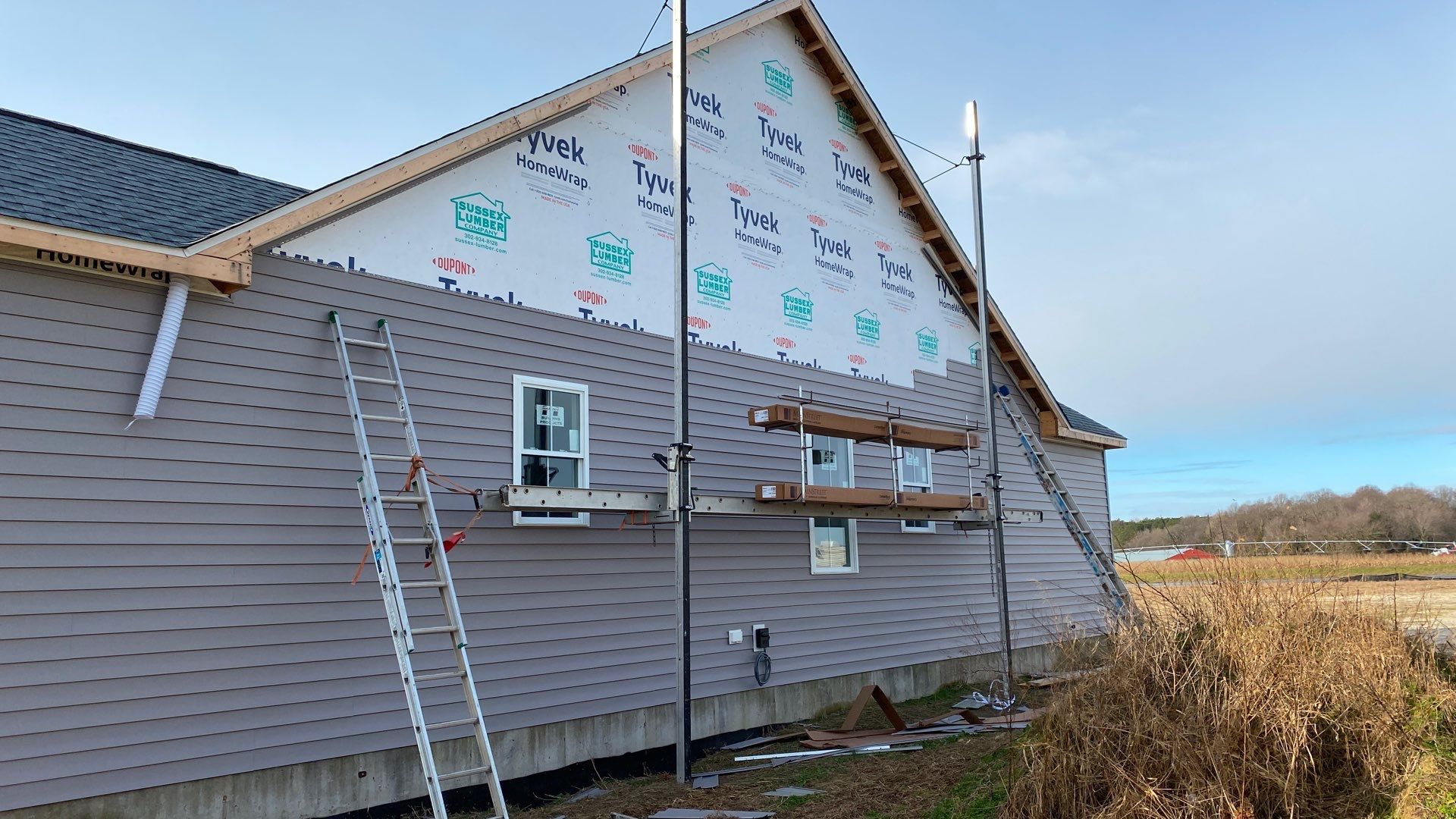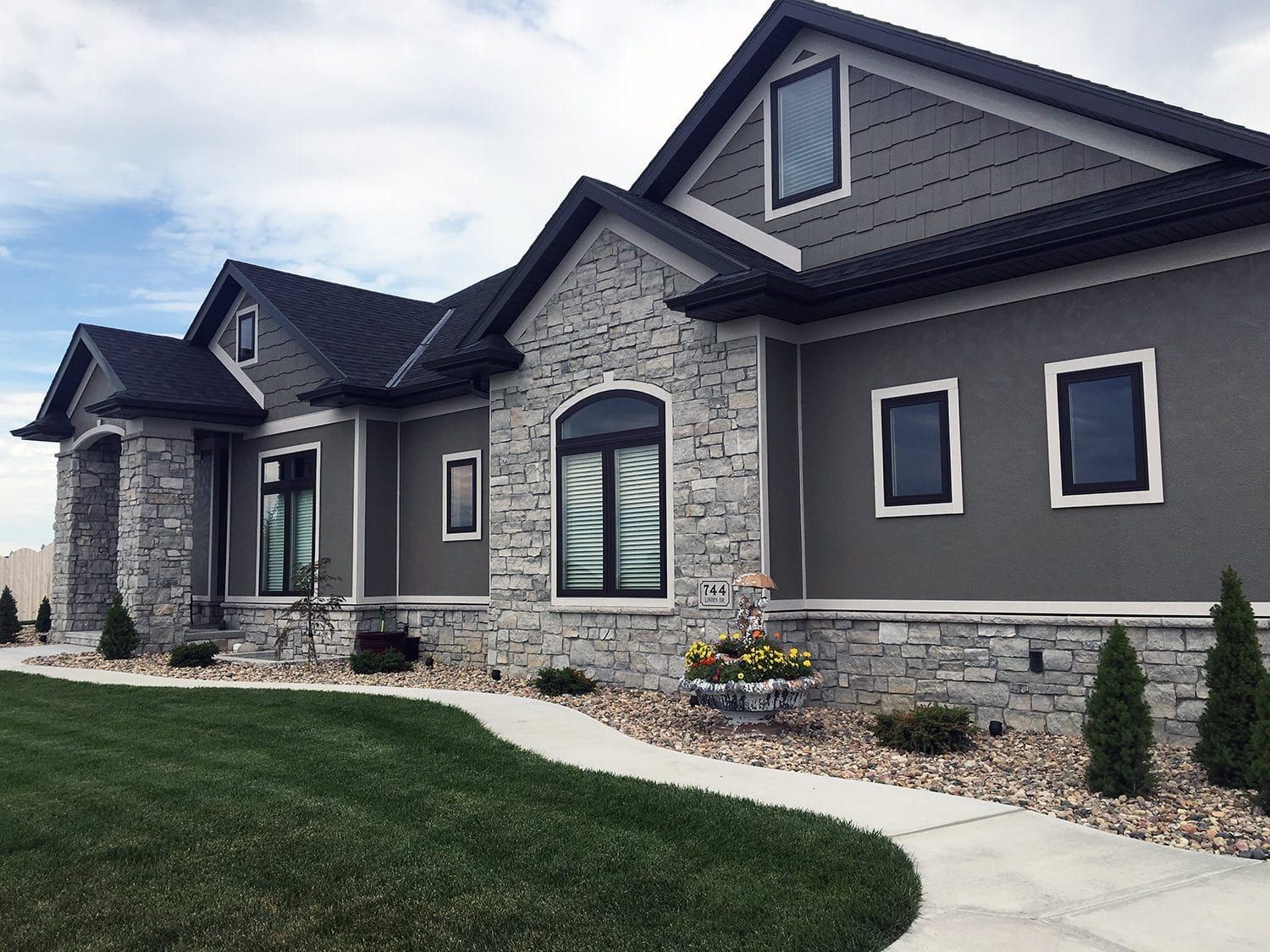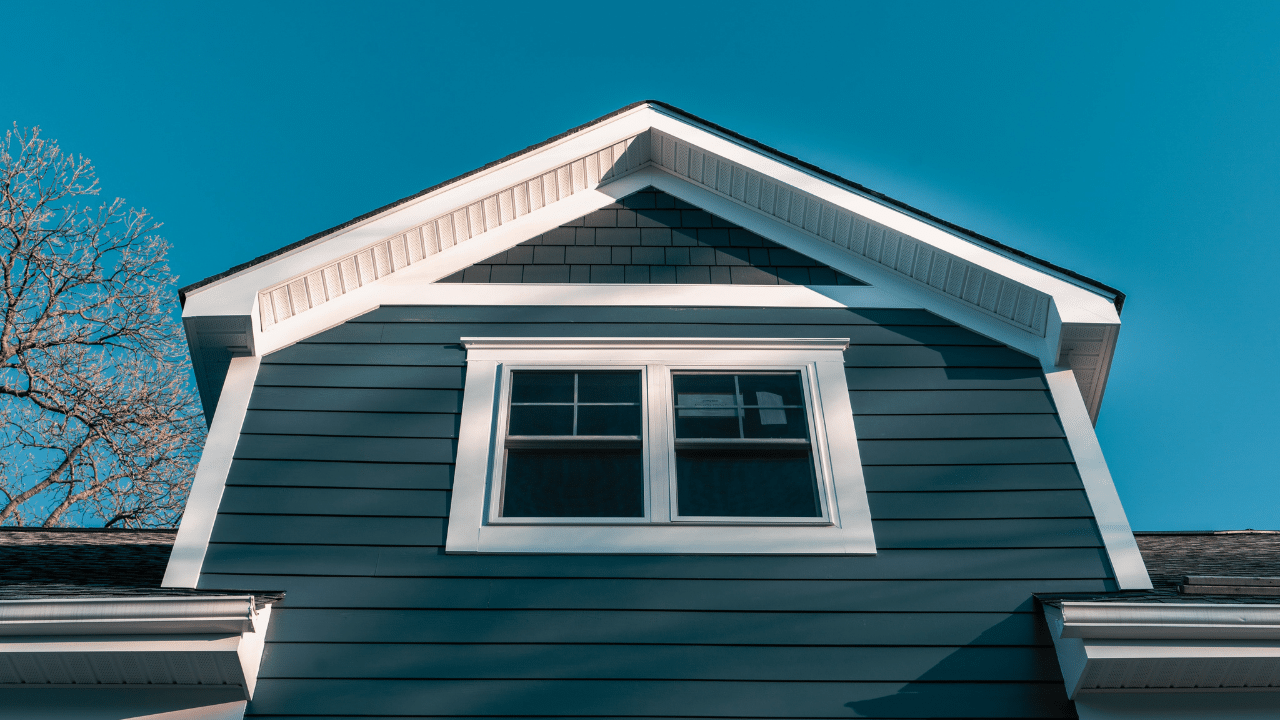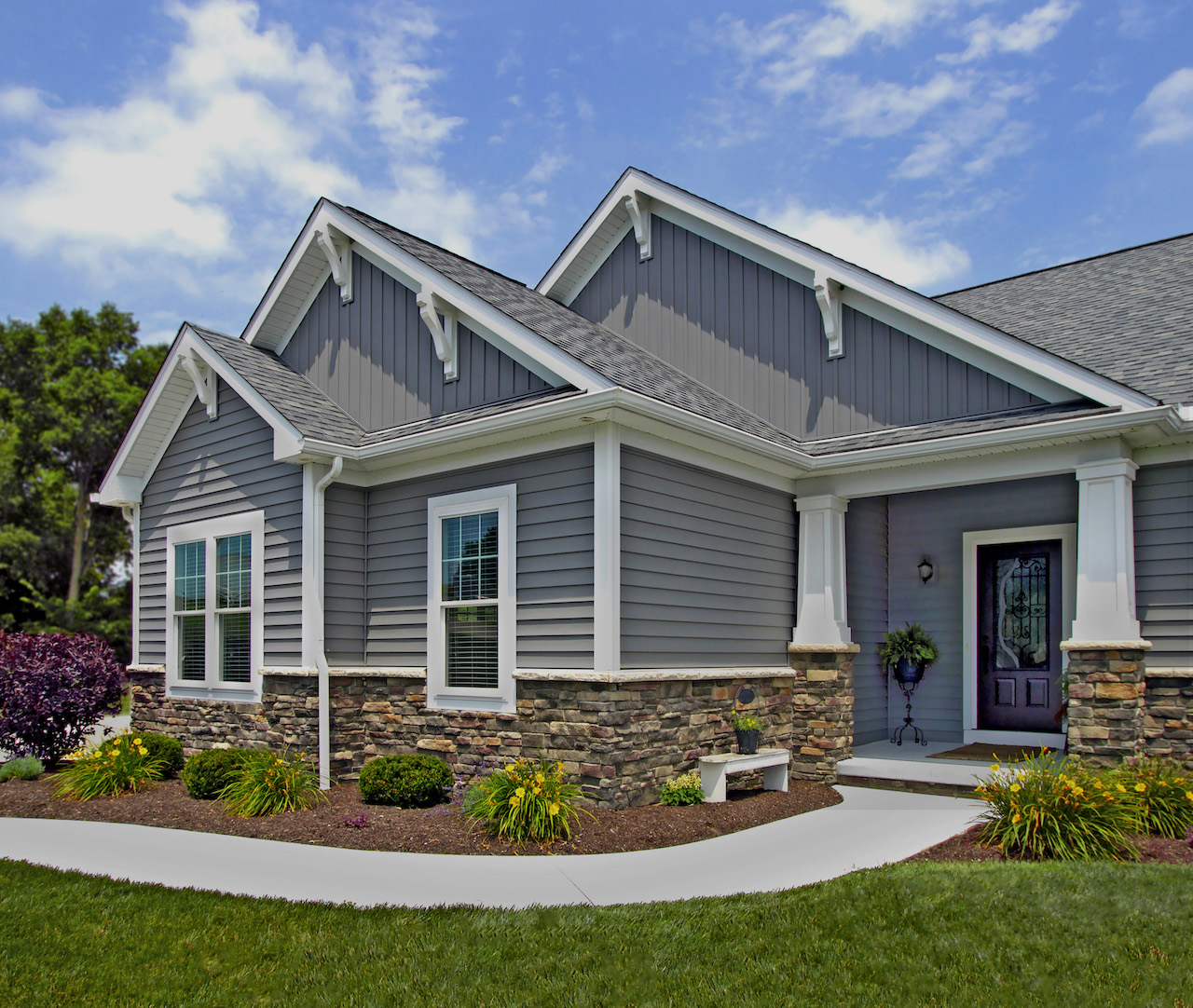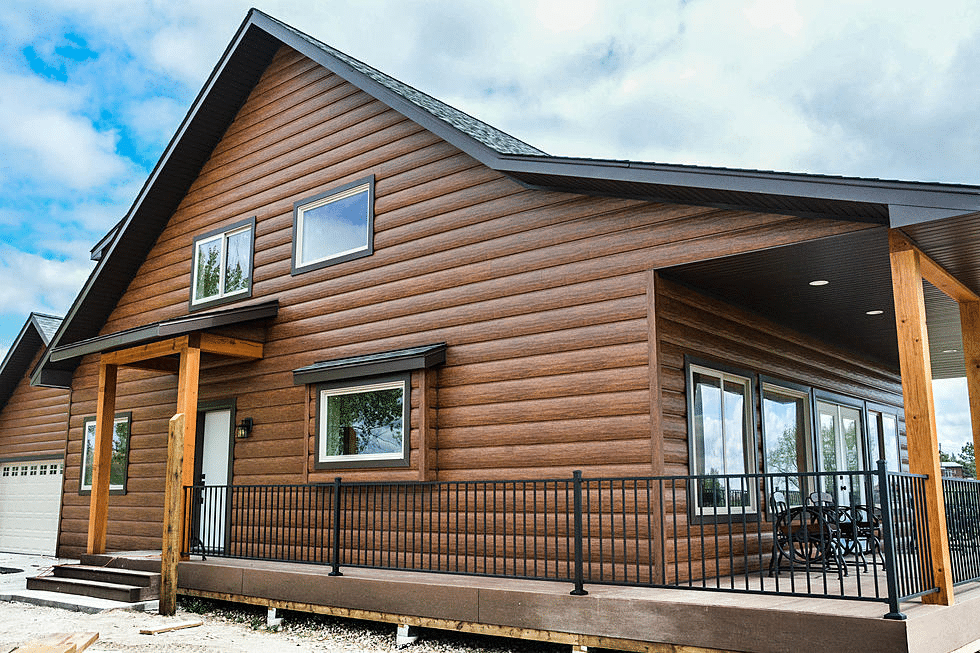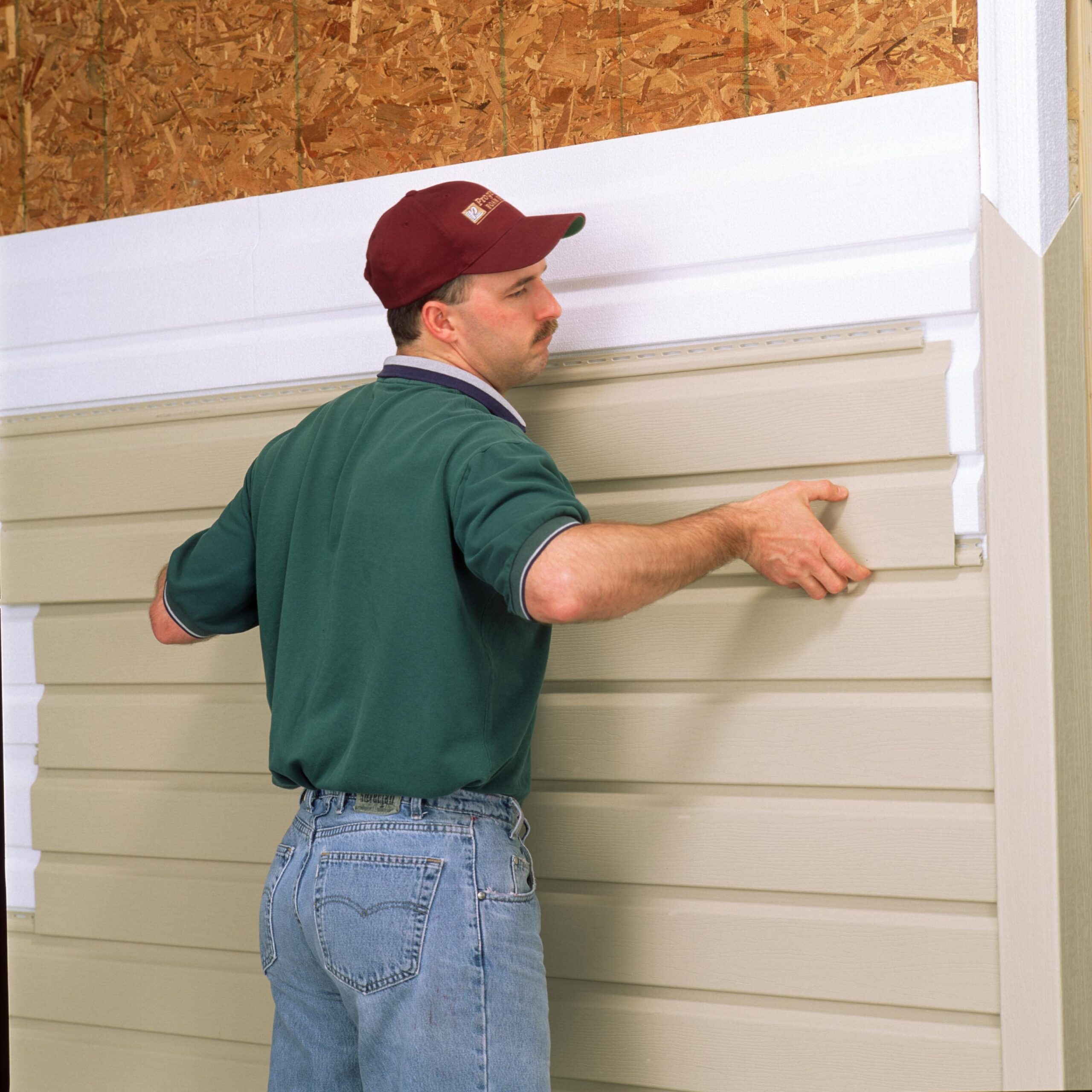Is Insulated Siding Worth It?
Is insulated siding worth it? That’s a question many homeowners grapple with when considering exterior renovations. The upfront cost might seem higher than traditional siding, but the long-term benefits—from reduced energy bills to increased home value—can be substantial. This comprehensive guide explores the financial implications, energy efficiency gains, durability, environmental impact, aesthetic options, and installation process, helping you make an informed decision.
We’ll delve into the specifics, comparing insulated siding to other options and examining the various factors influencing its overall value proposition. From R-values and energy savings to maintenance needs and aesthetic considerations, we’ll leave no stone unturned in our quest to answer this crucial question for potential homeowners and renovators alike.
Cost Analysis of Insulated Siding
Choosing between traditional and insulated siding involves a careful consideration of upfront costs and long-term savings. While insulated siding commands a higher initial investment, its energy efficiency can lead to significant cost reductions over time. This analysis will break down the costs associated with each option to help you make an informed decision.
Initial Cost Comparison: Traditional vs. Insulated Siding
The initial cost difference between traditional and insulated siding is substantial. Traditional vinyl siding, for example, typically ranges from $3 to $12 per square foot installed, depending on the style and quality. This includes the cost of materials and labor. Insulated siding, on the other hand, generally costs between $8 and $20 per square foot installed, again varying based on the specific product and installation complexity. This higher price reflects the added insulation layer and often, more complex installation process.
| Siding Type | Material Cost (per sq ft) | Labor Cost (per sq ft) | Total Installed Cost (per sq ft) |
|---|---|---|---|
| Traditional Vinyl Siding (low-end) | $1.50 – $4.00 | $1.50 – $8.00 | $3.00 – $12.00 |
| Traditional Vinyl Siding (high-end) | $4.00 – $8.00 | $4.00 – $8.00 | $8.00 – $16.00 |
| Insulated Vinyl Siding (low-end) | $4.00 – $10.00 | $4.00 – $10.00 | $8.00 – $20.00 |
| Insulated Vinyl Siding (high-end) | $10.00 – $16.00 | $4.00 – $10.00 | $14.00 – $26.00 |
Note: These are estimates and actual costs may vary depending on location, contractor, and project specifics.
Long-Term Cost Savings: Reduced Energy Bills
The primary advantage of insulated siding lies in its energy efficiency. The added insulation layer helps to reduce heat transfer, leading to lower heating and cooling costs. The extent of these savings depends on factors such as climate, home size, and existing insulation. However, significant reductions are often observed.
| Timeframe | Potential Annual Savings (Example: Moderate Climate, Average Home) | Total Savings |
|---|---|---|
| 10 years | $300 – $700 | $3000 – $7000 |
| 20 years | $300 – $700 | $6000 – $14000 |
| 30 years | $300 – $700 | $9000 – $21000 |
Note: These savings are estimates and actual amounts will vary greatly depending on individual circumstances. For example, a homeowner in a colder climate with poor existing insulation could see significantly higher savings, while a homeowner in a mild climate with good existing insulation might see more modest savings.
Potential Hidden Costs of Insulated Siding Installation
While the upfront cost is a major consideration, it’s crucial to account for potential hidden costs. These could include unforeseen repairs, such as damage to underlying sheathing during removal of existing siding, or issues related to improper installation leading to future problems like moisture intrusion. It’s essential to choose a reputable and experienced contractor to minimize these risks. Additionally, some insulated siding systems require specific preparation of the wall surface, which may add to the overall cost. Finally, permit fees and inspections, while not unique to insulated siding, are an added expense to consider for any siding project.
Energy Efficiency and Insulation Value
Insulated siding offers a significant boost to a home’s energy efficiency by providing an extra layer of insulation directly on the exterior. This reduces the amount of heat lost in winter and gained in summer, leading to lower energy bills and a more comfortable living environment. The effectiveness of this insulation is primarily determined by its R-value.
R-value is a measure of a material’s resistance to heat flow. A higher R-value indicates better insulation; less heat will pass through the material. The ideal R-value for your siding will depend on your climate and local building codes. Understanding the R-values of different insulated siding options is crucial for making an informed decision.
Insulated Siding R-Values and Material Comparison
The R-value of insulated siding varies depending on the material and its thickness. Below is a comparison of common types:
| Insulated Siding Type | Typical R-Value per inch | Comments |
|---|---|---|
| Polyurethane Foam Siding | 4-7 | Offers high R-value for its thickness, often lighter than other options. |
| Polyisocyanurate (Polyiso) Foam Siding | 5-8 | Similar to polyurethane, but often slightly higher R-value and better moisture resistance. |
| Fiberglass-reinforced Polymer (FRP) Siding with Foam Core | 3-5 | Combines the durability of FRP with the insulation of a foam core. R-value depends on core thickness. |
| Vinyl Siding with Foam Backing | 2-4 | Generally lower R-value compared to foam-based options, but still provides some insulation benefit. |
Note: R-values can vary slightly depending on the manufacturer and specific product. Always check the manufacturer’s specifications for accurate data.
Impact of Insulated Siding on Heating and Cooling Costs
Insulated siding directly reduces the amount of energy needed to heat and cool your home. For example, in a cold climate like Minnesota, a home with insulated siding might see a 15-20% reduction in heating costs compared to a home with traditional siding. In a hot climate like Arizona, the same siding could lead to a 10-15% reduction in cooling costs. These savings are a direct result of reduced heat transfer through the exterior walls. The exact savings will vary based on factors like home size, climate, existing insulation levels, and energy efficiency of the HVAC system. A well-insulated home will maintain a more stable internal temperature, reducing the workload on the heating and cooling system and ultimately lowering your energy bills.
Energy Efficiency Comparison: Insulated Siding vs. Other Methods
While insulated siding is an effective insulation method, it’s important to compare it to other options to determine the best approach for your home.
| Insulation Method | Pros | Cons |
|---|---|---|
| Insulated Siding | Relatively easy installation, improves curb appeal, provides continuous insulation, good for existing homes. | Can be more expensive upfront than some other methods, R-value may be lower than spray foam for equivalent thickness. |
| Spray Foam Insulation | High R-value, excellent air sealing, fills gaps and cracks effectively. | More expensive, requires professional installation, potential for off-gassing of certain types. |
| Fiberglass Batts/Rolls | Cost-effective, readily available, relatively easy DIY installation (for experienced DIYers). | Lower R-value per inch than spray foam or some insulated sidings, can leave gaps if not installed properly. |
Durability and Maintenance
Insulated siding offers a compelling blend of energy efficiency and aesthetic appeal, but its long-term performance hinges on its durability and the associated maintenance requirements. Understanding the lifespan, maintenance needs, and weather resistance of insulated siding compared to traditional options is crucial for making an informed decision. This section will delve into these aspects, providing a clearer picture of the long-term costs and benefits.
Insulated siding generally boasts a longer lifespan than many traditional siding materials. While the specific lifespan varies considerably depending on several factors, it often surpasses that of vinyl or wood siding. Proper installation is paramount; a poorly installed system, regardless of material quality, will fail prematurely.
Lifespan of Insulated Siding and Factors Affecting It
The lifespan of insulated siding typically ranges from 30 to 50 years, sometimes even longer with proper care. This longevity is significantly influenced by several key factors. The quality of the materials used in the siding’s construction plays a critical role; high-quality materials are more resistant to damage and degradation. Climate conditions also have a significant impact. Areas with harsh winters, intense sun exposure, or frequent extreme weather events will likely see a shorter lifespan than those with milder climates. Finally, the quality of installation directly affects the longevity of the siding. Improper installation can lead to premature failure due to water penetration, damage from expansion and contraction, and other issues. For example, a house in a coastal region with high winds and salt spray might experience degradation faster than a house in a sheltered inland location.
Maintenance Needs of Insulated Siding Compared to Traditional Siding
Regular maintenance is key to maximizing the lifespan of any siding, and insulated siding is no exception. However, the specific maintenance requirements differ somewhat from traditional options.
Insulated Siding Maintenance:
- Annual cleaning: A simple washing with a hose and mild detergent can remove dirt and debris, preventing buildup and potential damage.
- Inspection for damage: Regularly check for cracks, dents, or loose panels. Addressing minor issues promptly prevents them from escalating into larger, more costly repairs.
- Caulk and sealant checks: Inspect and reapply caulking and sealants around windows and doors as needed to prevent water penetration.
- Periodic painting or repainting (depending on the finish): Some insulated siding requires repainting over time to maintain its appearance and protect the underlying materials.
Traditional Siding Maintenance (e.g., Vinyl or Wood):
- More frequent cleaning: Wood siding, in particular, may require more frequent cleaning to prevent mildew and algae growth.
- More extensive repairs: Wood siding often requires more frequent and extensive repairs due to rot, insect damage, or warping.
- Painting/staining: Wood siding typically needs repainting or restaining every few years, adding to the maintenance costs.
- Potential for pest infestations: Wood siding is susceptible to insect infestations, requiring treatment and potentially replacement of damaged sections.
Weather Resistance of Insulated Siding
Insulated siding is engineered to withstand various weather conditions. The outer layer is designed to be highly resistant to damage from wind, rain, snow, and UV radiation. Its robust construction typically provides superior protection against water penetration compared to traditional siding materials like wood. However, the specific level of weather resistance depends on the quality of the siding and the proper installation. For instance, high-quality insulated siding with reinforced corners and well-sealed seams will offer greater protection against wind-driven rain than a lower-quality product with gaps in its installation. The material’s ability to withstand extreme temperature fluctuations also contributes to its overall durability. This helps prevent cracking and warping that can occur with other siding materials.
Environmental Impact
Choosing siding involves more than just aesthetics and cost; it has significant environmental implications throughout its lifecycle. From manufacturing to disposal, the environmental footprint of insulated siding compared to traditional options needs careful consideration. Understanding the embodied carbon and the long-term energy savings helps in making a well-informed decision.
The environmental impact of insulated siding is a complex issue, encompassing both the manufacturing process and the long-term energy efficiency gains. Manufacturing processes for different siding materials require varying amounts of energy and resources, resulting in different levels of embodied carbon. Disposal also presents challenges, with some materials being more easily recycled or repurposed than others. However, the reduced energy consumption resulting from better insulation can significantly offset the initial environmental cost.
Embodied Carbon of Various Siding Materials
Embodied carbon refers to the greenhouse gas emissions associated with the manufacturing, transportation, and installation of a building material. Different siding materials have varying embodied carbon footprints. This table provides a general comparison; precise values can vary based on manufacturing processes and material sourcing. Note that these are estimates and can fluctuate depending on factors such as manufacturing methods and transportation distances.
| Siding Material | Approximate Embodied Carbon (kg CO2e/m²) | Notes |
|---|---|---|
| Vinyl Siding | 100-150 | Relatively high due to petroleum-based production. Recycling rates are low. |
| Fiber Cement Siding | 150-250 | Higher embodied carbon than vinyl, but more durable and potentially longer-lasting. |
| Wood Siding | 80-120 (depending on wood type and treatment) | Can be sustainably sourced and potentially carbon-negative if from responsibly managed forests. Requires maintenance and is susceptible to rot and insect damage. |
| Insulated Vinyl Siding | 120-180 | Combines the high embodied carbon of vinyl with the insulation’s environmental impact; however, energy savings may offset this over the building’s lifespan. |
| Insulated Fiber Cement Siding | 180-280 | High embodied carbon, but durability and energy savings might compensate over time. |
Impact of Reduced Energy Consumption on Carbon Footprint
Insulated siding’s primary environmental benefit lies in its ability to reduce a home’s energy consumption. By improving the building envelope’s insulation, it minimizes the amount of energy needed for heating and cooling. This directly translates to lower greenhouse gas emissions from power generation. For example, a home using insulated siding might reduce its annual heating and cooling energy consumption by 15-25%, leading to a significant decrease in its carbon footprint. The magnitude of this reduction depends on factors such as climate, home size, and existing insulation levels. A home in a colder climate with poor insulation would see a more substantial reduction in carbon emissions compared to a well-insulated home in a moderate climate. Consider a house in Minnesota, where winter heating is crucial; insulated siding could significantly lower its reliance on fossil fuel-based heating systems, resulting in a much more pronounced decrease in its carbon footprint compared to a house in Southern California.
Aesthetic Considerations
Insulated siding offers a surprisingly wide range of aesthetic options, moving beyond the perception of a purely functional material. Its visual appeal can significantly impact a home’s curb appeal and overall style, making it a key consideration in the renovation or construction process. The variety of styles and colors available allows for seamless integration with various architectural designs and personal preferences.
Insulated siding comes in a variety of styles and colors, allowing for considerable design flexibility. Different manufacturers offer various profiles mimicking the look of traditional materials like wood, brick, or stone, but with the added benefit of insulation.
Variety of Styles and Colors
The visual options for insulated siding are extensive. For instance, you can find profiles that replicate the look of clapboard siding, common in New England-style homes, with variations in width and detailing. Other options include vertical siding, reminiscent of modern farmhouse designs, or even profiles that mimic the texture and appearance of natural stone, offering a rustic or sophisticated look depending on the color and finish chosen. Color palettes range from classic earth tones to bold modern hues, and many manufacturers offer custom color matching to perfectly complement a home’s existing features or a homeowner’s specific vision. For example, a homeowner might choose a deep charcoal gray to complement a modern architectural style, or a warm beige to enhance a craftsman-style home.
Comparison to Other Siding Options
Compared to traditional wood siding, insulated siding offers a lower-maintenance alternative without sacrificing aesthetic appeal. While wood siding can provide a naturally warm look, it requires regular painting or staining to prevent deterioration and insect damage. Insulated siding, especially vinyl or fiber cement varieties, resists rot, warping, and insect infestation, requiring less upkeep. Similarly, while brick or stone offer durability and a classic aesthetic, they are significantly more expensive and heavier than insulated siding, impacting installation costs and potentially the structural integrity of the home. Metal siding offers a modern look but can be susceptible to dents and may not provide the same level of insulation. Ultimately, the aesthetic appeal is subjective, but insulated siding presents a compelling combination of visual options and practicality.
Choosing Insulated Siding for Different Architectural Styles
The versatility of insulated siding makes it suitable for a wide range of architectural styles. For example, a colonial-style home might benefit from the clean lines and classic look of clapboard-style insulated siding in a traditional white or muted gray. A contemporary home, on the other hand, might be enhanced by sleek, vertical siding in a modern gray or deep blue. For a more rustic or craftsman-style home, a stone- or wood-textured insulated siding in earthy tones would create a cohesive and visually appealing exterior. The key is to select a profile, color, and texture that complement the existing architectural features and overall style of the home. Consider the roofline, window details, and other exterior elements to ensure a harmonious and aesthetically pleasing result. For instance, a home with intricate trim details might benefit from a simpler siding profile, while a home with clean lines could accommodate a more textured or detailed siding option.
Installation Process
Installing insulated siding is a more involved process than traditional vinyl or wood siding, requiring specialized tools and expertise. The extra layer of insulation adds complexity, but the potential long-term energy savings can justify the increased effort and cost. Proper installation is crucial for maximizing the siding’s energy efficiency and longevity.
The installation process generally follows these steps:
- Preparation: This crucial first step involves measuring the area to be sided, ordering the correct amount of materials, and preparing the existing wall surface. This includes removing old siding, repairing any damaged sheathing or underlying structure, and ensuring the wall is clean and dry. Any necessary repairs should be completed before installing the new siding.
- Framing and Furring Strips (If Necessary): Depending on the existing wall structure, furring strips may need to be installed to create a consistent surface for the insulated siding panels. This step helps ensure a uniform and even installation, especially on uneven walls. This may also involve adding additional bracing or reinforcement to the existing structure.
- Installation of the Insulated Siding Panels: This involves attaching the panels to the wall using appropriate fasteners. The panels typically interlock, creating a weathertight seal. Care must be taken to ensure proper alignment and spacing between panels. Each manufacturer will have specific instructions regarding installation techniques.
- Finishing Touches: Once the main panels are installed, finishing elements such as corner trim, J-channels, and window/door casings are added. These elements provide a clean and professional finish to the project and help protect the edges of the insulated siding. Caulk is often used to seal gaps and ensure a weathertight seal.
- Inspection: A final inspection is vital to check for any gaps, misalignments, or other issues. Addressing these issues promptly is crucial to prevent future problems. This step may also involve checking the energy efficiency of the installation to ensure it meets expectations.
Installation Time and Complexity Compared to Traditional Siding
Insulated siding installation generally takes longer than traditional siding installation. The added layer of insulation and the often more complex interlocking system of the panels increase installation time. For example, a project that might take a crew of two experienced installers three days with traditional vinyl siding could easily take five days with insulated siding, depending on the size and complexity of the project. The increased complexity also requires more specialized tools and a higher level of skill.
Qualifications Needed for Insulated Siding Installation
Proper installation of insulated siding requires a higher level of skill and experience compared to traditional siding. Installers should have a thorough understanding of building codes, insulation principles, and the specific installation instructions provided by the siding manufacturer. Ideally, installers should possess experience with exterior wall construction and be familiar with various fastening techniques and weatherproofing methods. Certification from relevant professional organizations can further demonstrate competence. Using unqualified installers can void warranties and potentially lead to future problems.
Closing Notes
Ultimately, whether insulated siding is “worth it” depends on your individual circumstances and priorities. Weighing the initial investment against long-term energy savings, durability, and aesthetic preferences is crucial. While the upfront cost is higher, the potential for significant energy savings, reduced maintenance, and increased home value over time makes insulated siding a compelling option for many homeowners. Consider your budget, climate, and long-term goals to determine if this investment aligns with your needs.



